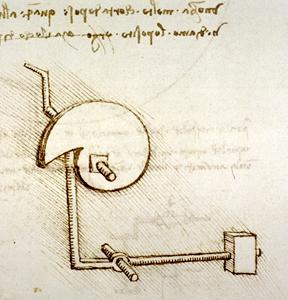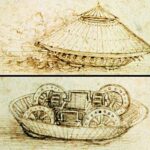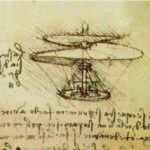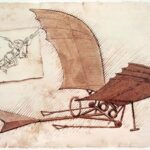Leonardo da Vinci Cam Hammer
Leonardo da Vinci cam hammer is another example of thinking centuries ahead of his time. This machine would be used extensively for several hundreds of years after his death during the industrial revolution. They would be powered by the Steam engine and could hammer up to twenty times per second. They were used to draw out the sheet metal for ships and armored machines for war such as the tanks in world war I.
Below is his original drawing for the cam hammer –
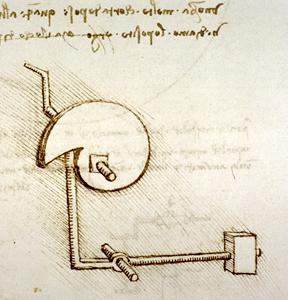
Leonardo da Vinci’s cam hammer
As you can see it was intended to be hand cranked. This would rotate the cam upon which the hammer mechanisms rest and follows. When the cam is rotated the weight of the hammer ensures that the bar connected to it always wants to be tight up against it due to the force of gravity. Eventually, the hammer and its mechanism follow to cam all the way around until the cam suddenly drops off – this makes the hammer fall also. Below is an animation showing the cam hammer in action –
Hammers like these would continue to be in use until the early 20th century when they were replaced by rolling mills, these were much more powerful and efficient at rolling sheet metal down to its desired dimensions, they rely on the brute force that can be utilized with today’s modern machinery using hydraulics.
